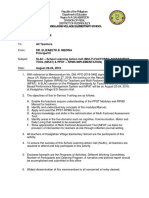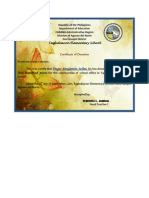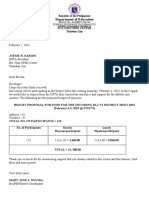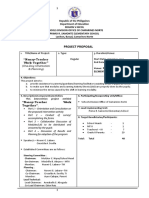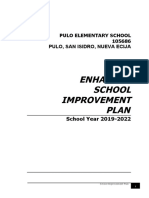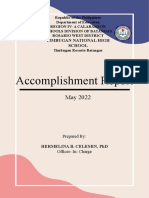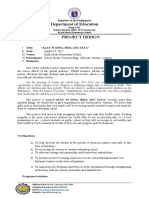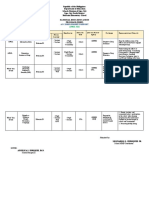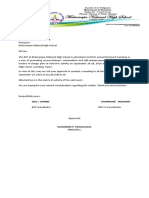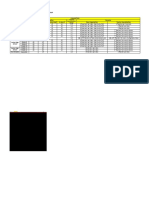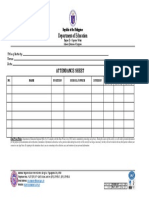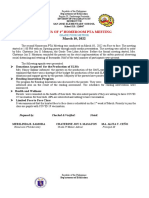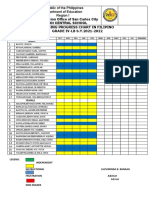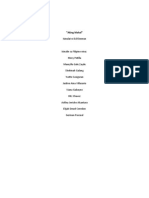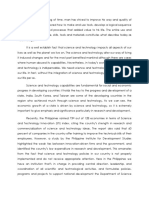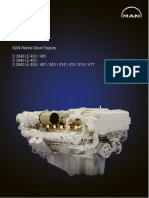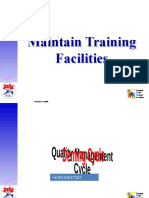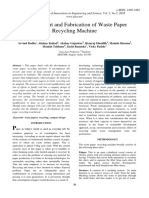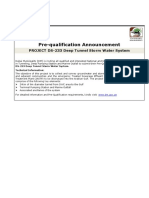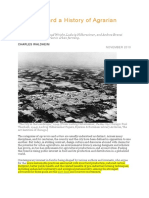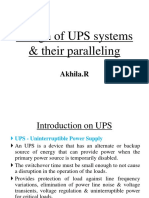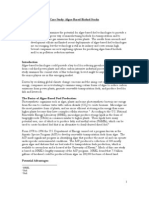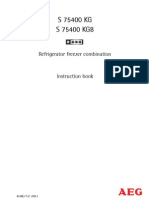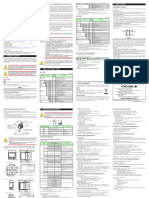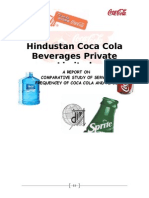0% found this document useful (0 votes)
436 views11 pagesCommunity Based Project
This document provides background information on a community-based project called "Adopting Niputong: Establishing its Environmental Sustainability for the Next Generation". The project was initiated by the San Fabian National High School BRIDGING HEART TO HOPE CLUB to promote environmental awareness in the adopted community of Pansel Guilig. The objectives of the project are to disseminate environmental information, encourage involvement in environmental issues, develop skills to increase awareness and participation, and initiate sustainable environmental practices. The significance of the project is to promote long-term environmental protection and better the lives of community members.
Uploaded by
macyCopyright
© © All Rights Reserved
We take content rights seriously. If you suspect this is your content, claim it here.
Available Formats
Download as DOCX, PDF, TXT or read online on Scribd
0% found this document useful (0 votes)
436 views11 pagesCommunity Based Project
This document provides background information on a community-based project called "Adopting Niputong: Establishing its Environmental Sustainability for the Next Generation". The project was initiated by the San Fabian National High School BRIDGING HEART TO HOPE CLUB to promote environmental awareness in the adopted community of Pansel Guilig. The objectives of the project are to disseminate environmental information, encourage involvement in environmental issues, develop skills to increase awareness and participation, and initiate sustainable environmental practices. The significance of the project is to promote long-term environmental protection and better the lives of community members.
Uploaded by
macyCopyright
© © All Rights Reserved
We take content rights seriously. If you suspect this is your content, claim it here.
Available Formats
Download as DOCX, PDF, TXT or read online on Scribd
/ 11







